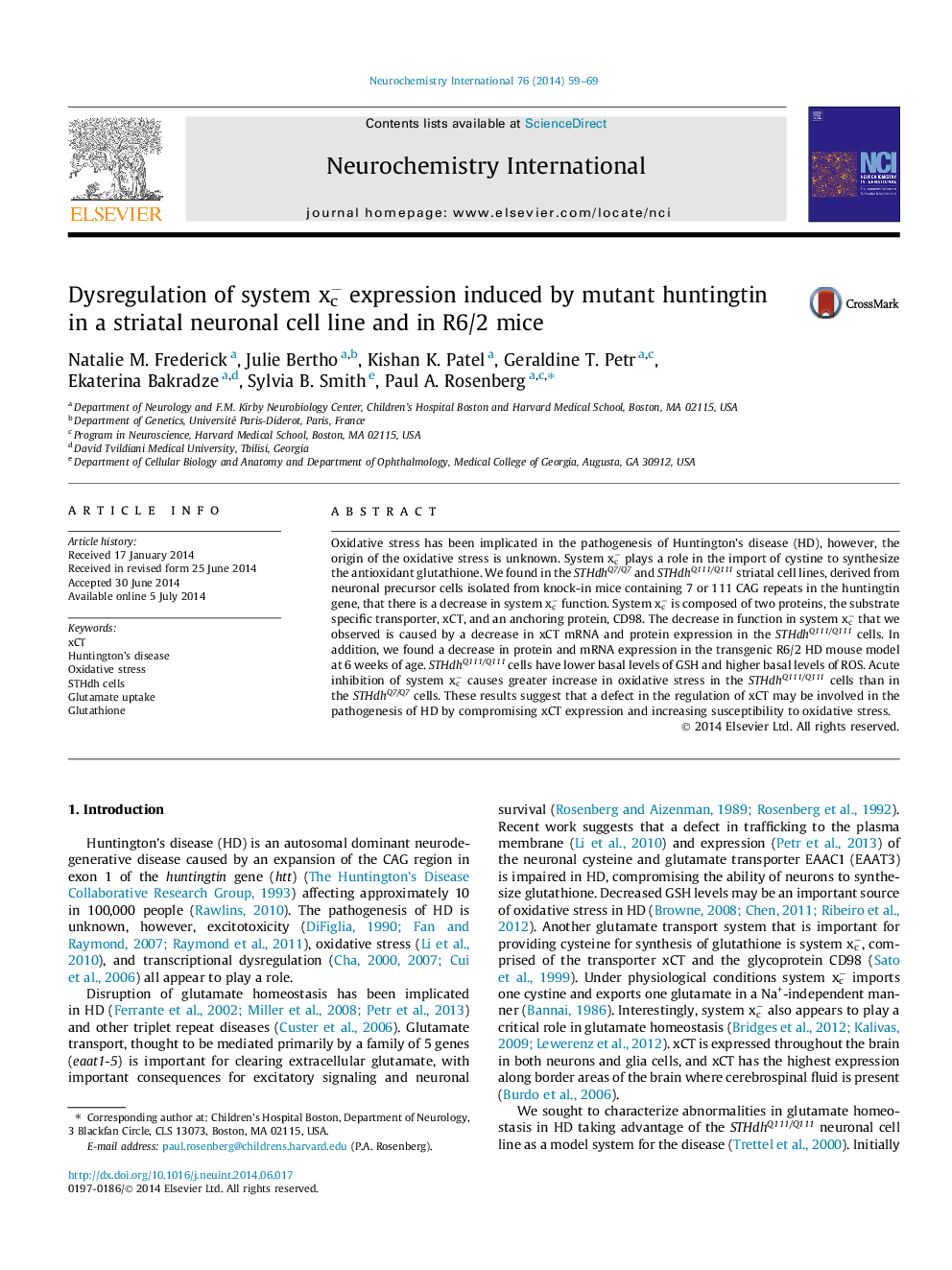| کد مقاله | کد نشریه | سال انتشار | مقاله انگلیسی | نسخه تمام متن |
|---|---|---|---|---|
| 2200535 | 1551297 | 2014 | 11 صفحه PDF | دانلود رایگان |

• Na+-independent glutamate uptake is decreased in STHdhQ111/Q111 cells.
• xCT mRNA and protein levels are decreased in STHdhQ111/Q111 cells.
• xCT mRNA and protein are decreased in the R6/2 striatum at 6 weeks.
• ROS levels are increased and GSH levels are decreased in STHdhQ111/Q111 cells.
Oxidative stress has been implicated in the pathogenesis of Huntington’s disease (HD), however, the origin of the oxidative stress is unknown. System xc− plays a role in the import of cystine to synthesize the antioxidant glutathione. We found in the STHdhQ7/Q7 and STHdhQ111/Q111 striatal cell lines, derived from neuronal precursor cells isolated from knock-in mice containing 7 or 111 CAG repeats in the huntingtin gene, that there is a decrease in system xc− function. System xc− is composed of two proteins, the substrate specific transporter, xCT, and an anchoring protein, CD98. The decrease in function in system xc− that we observed is caused by a decrease in xCT mRNA and protein expression in the STHdhQ111/Q111 cells. In addition, we found a decrease in protein and mRNA expression in the transgenic R6/2 HD mouse model at 6 weeks of age. STHdhQ111/Q111 cells have lower basal levels of GSH and higher basal levels of ROS. Acute inhibition of system xc− causes greater increase in oxidative stress in the STHdhQ111/Q111 cells than in the STHdhQ7/Q7 cells. These results suggest that a defect in the regulation of xCT may be involved in the pathogenesis of HD by compromising xCT expression and increasing susceptibility to oxidative stress.
Journal: Neurochemistry International - Volume 76, October 2014, Pages 59–69